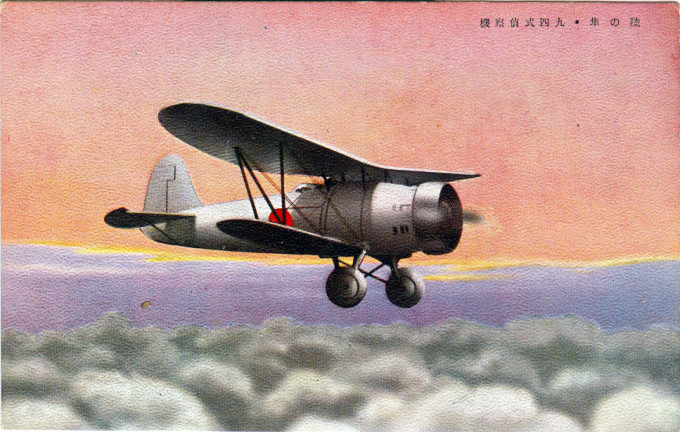“With the appearance of the Aichi D1A, dive bombing came into its own in the Japanese navy. In 1935, the navy had begun to practice formation dive bombing and to experiment with a formula whereby carrier fighters would stay above the dive bombers as a cover force while the latter dove into the attack.
“But the controversy over the superiority of dive bombing as opposed to torpedo bombing, which had begun soon after the formation of the First Carrier Division in 1928, was to grow in intensity during the succeeding decade … [A]dvocates of each tactic merely made self-serving arguments concerning the great contribution it would make to winning a decisive battle at sea.
“Eventually, as we shall see, the Japanese navy was to work out a powerful offensive system of coordinated mass assaults by fighter aircraft, dive bombers, and torpedo planes that was practiced repeatedly and with great precision by the navy in the years immediately prior to the Pacific War.”
– Sunburst: The Rise of Japanese Naval Air Power, 1909-1941, by Mark Peattie, 2013
“The Aichi D1A or Navy Type 94/96 Carrier Bomber (Allied reporting name ‘Susie’), a carrier-based dive bomber of the 1930s, was Japan’s first custom-designed dive bomber. The single-engine, two-seat biplane – based on the Heinkel He 66 – was produced by Aichi for the Imperial Japanese Navy, and proved successful in combat during the early years of the Sino-Japanese War.
“The D1A came out of the Imperial Japanese Navy’s need for an advanced carrier-based dive bomber, and in late 1934 the IJN ordered the finalization of the Aichi AB-9 design which was produced as the early model D1A1. However, the D1A1 was not designed by Aichi Tokei Denki Kabushiki Kaisha aircraft company, but by Ernst Heinkel Flugzeugwerke at the request of the Aichi company.
“The design of the D1A, based on the Heinkel He 66 (an export model of the He 50), was designed as a biplane constructed of metal, with a fabric covering, fixed landing gear and a conventional type tail landing skid. Original models had 365 kW (490 hp) engines and it was not until later models that more powerful 433 kW (580 hp) engines were included in the construction.
“The D1A was primarily used in the Second Sino-Japanese War and up to the time Japan entered World War II in 1941. By 1941, though, it had been relegated to service as a trainer. The D1A was produced in two variants, the D1A1 (Navy Type 94 Carrier Bomber), and the D1A2 (Navy Type 96 Carrier Bomber, sometimes referred to as the D2A).
“At the beginning of the Pacific War, all of the remaining D1A1s were decommissioned and most of the D1A2s were retired from the front lines and served primarily in training units.”
– Wikipedia
Performance:
Crew: 2, pilot and gunner
Maximum speed: 309 km/h (171 kn, 192 mph)
Range: 927 km (498 nmi, 576 mi)
Service ceiling: 6,980 m (22,900 ft)


